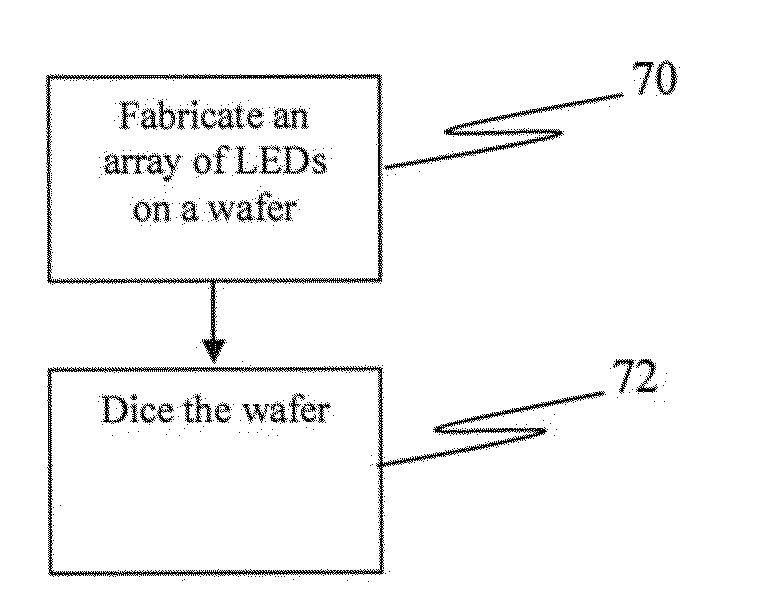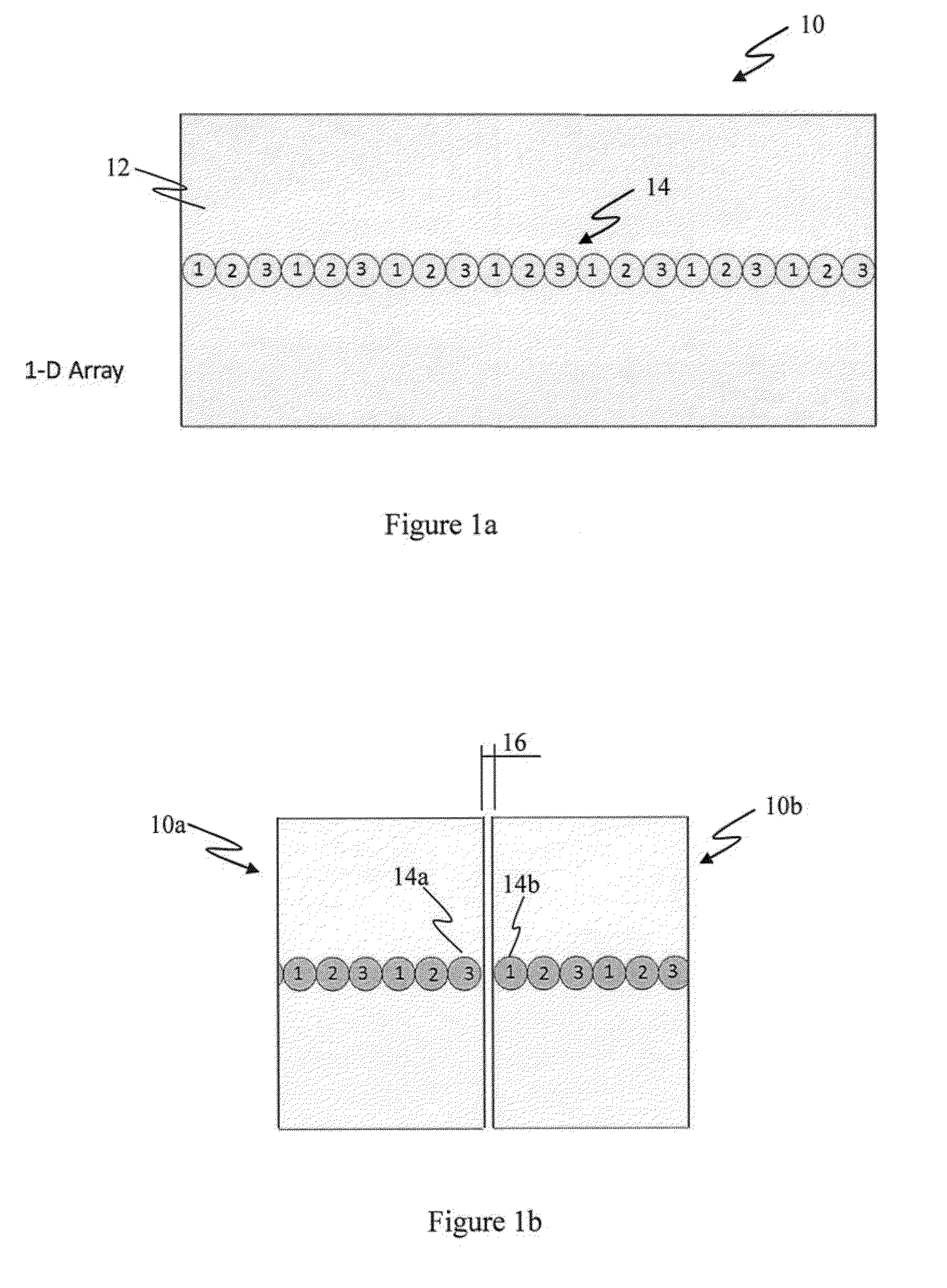Light emitting diode chip
a technology of light-emitting diodes and led chips, which is applied in the direction of electrical equipment, semiconductor devices, printing, etc., can solve the problems of less power used, longer battery life, and loss of absorption
- Summary
- Abstract
- Description
- Claims
- Application Information
AI Technical Summary
Benefits of technology
Problems solved by technology
Method used
Image
Examples
Embodiment Construction
[0048]Generally disclosed herein are apparatus and methods to allow LED chips to be positioned adjacent one another to form a continuous array of LEDs while maintaining a constant pitch between individual LEDs.
[0049]LED arrays on an LED chip may comprise one or more of: 1) Discrete LED components (e.g. TO can, surface mount or epoxy packages) densely packed in a row on a PCB; 2) Bare die LED chips densely packed in a row (i.e. using Chip on Board (COB) or other approaches); and 3) Multiple individually addressable LEDs on a single chip (i.e. a monolithic LED array).
[0050]For the first two examples above, a full LED chip produces light and each LED device in an array may be considered a single emitter. Therefore, the size of the LEDs and the pitch of such LEDs in an array (and hence the resolution) is defined by the size and packaging density of the individual components. For example, if a standard bare die LED chip with dimensions of 250 μm×250 μm is used and requires a spacing of 2...
PUM
 Login to View More
Login to View More Abstract
Description
Claims
Application Information
 Login to View More
Login to View More - R&D
- Intellectual Property
- Life Sciences
- Materials
- Tech Scout
- Unparalleled Data Quality
- Higher Quality Content
- 60% Fewer Hallucinations
Browse by: Latest US Patents, China's latest patents, Technical Efficacy Thesaurus, Application Domain, Technology Topic, Popular Technical Reports.
© 2025 PatSnap. All rights reserved.Legal|Privacy policy|Modern Slavery Act Transparency Statement|Sitemap|About US| Contact US: help@patsnap.com



